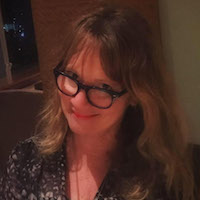
Several years ago, I painted prolifically with my boyfriend. We ventured out to the everywhere of landscapes, coffee shops, and unsuspecting people to paint in watercolor and outline in ink. We brought home copious amounts of half-done works, a lot of mistakes, and maybe an accidental masterpiece.
I didn’t like many of the paintings we did. He liked almost all of them.
I kept my painting-mishaps. Sometimes, I would use the other side for another painting or rip them to make collages. My partner would frame all of his paintings with glass and black electrical tape and hang them in cafes and hair salons around town. He had this unspoken acceptance that all of his paintings were worth framing. I would cringe at the fact that he hung them like that in public, but I was in awe of his courage.
Audacity was an inspiring trait of this man. Having boundaries was not. One day I walked into a café and saw a painting of mine that I despised, and it was framed and hanging. There was my blunder on display for everyone to see. I had given no permission for him to do this. The painting wasn’t even finished. I was horrified, angry, and I’m pretty sure a dramatic scene went down when I got home.
The next day, I went to retrieve my painting and guess what? It had sold. Whaaaat? Someone had bought and hung my atrocity in their living room, and it wasn’t even finished. I met the buyer and without revealing how embarrassed I was I asked, “So, what do you like about it?” She said, “Well, everything…especially the unfinished look.” Really?
I experienced one of those cellular changes where the epiphany is greater than the sum of the painting. How is it that I couldn’t see the beauty someone else could see in my own work? Was I doing good work and not even knowing it? Am I not even my own audience? I was sad, excited, confused, and inspired to paint more. I had no idea that my standards for what was considered “good” might be suspect.
T.S. Eliot said, “Between the idea and the reality, falls the shadow.” How we think our art and writing should look and what actually happens is often out of our control. But that doesn’t mean it won’t be something as good or better than we planned. If we are attached to the vision of what it must look like, we are robbing ourselves of the pleasure that can come from going with the flow and looking for what the work itself wants to become…and then accepting it as the wonder it is.
Since then, I’ve received feedback from readers of the books I’ve illustrated, and I can see that my art is not that bad. But it took a lot of looking through the eyes of the people who appreciate it to dissolve the deep-rooted illusion that wanted me to believe my art sucked.
Perfectionism is creativity’s wicked stepsister. She dismisses the compliments of others as ignorant or uninformed, she towers over us with a disapproving look that robs us of the joy in the process, she insists that we keep our work to ourselves to avoid the embarrassment of others seeing our ineptness.
She needs to be stopped.
The wall that perfectionism builds through her rigid demands can hide the sweetness that comes with savoring our own work. One of the biggest joys of making something is to appreciate its reflection of our divine ability to bring something new into existence. It’s our soul’s signature, writing itself for us to see and applaud.
Not everyone will be our audience and that’s okay. But if we hold to relentless standards, we will have a hard time believing anyone would be our audience. And that’s just sad.
Perfectionism sees in black and white. Either it’s perfect or it’s unacceptable. She’s never pleased because, really, “perfect” is not possible. She doesn’t pause to love the serendipity and magic in the process nor is she satisfied if someone else tells us we’ve done well.
Perfectionism is a party-pooper.
One way to challenge her distorted reality is to ask questions. Questions give the subconscious mind time to sneak out of perfectionism’s relentless bondage as it discovers answers that expose her as a fake.
Here, quick, if perfectionism is near-by, ask these:
• What would it feel like to simply enjoy the process just five percent more, no matter the result? Could I act as if I enjoy what I’m doing and accidentally find myself lost in the bliss that creativity offers?
• What would it feel like to believe in what I’ve done, to share it confidently, to love it even if it hasn’t reached unnecessarily high standards?
• What would it feel like to believe the compliments of others just five percent more?
Claim your audacity. Share your half-finished works with the world. Frame them with boldness and defiance. And make it fun.
~
~
~
Author: Jill Badonsky
Image: Unsplash/Mike Wilson
Editor: Travis May
Copy Editor: Lieselle Davidson
Social Editor: Sara Karpanen


 Share on bsky
Share on bsky




Read 5 comments and reply